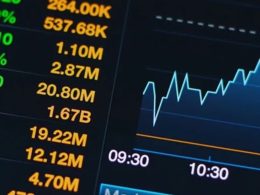Over the past year, commodity markets have been heavily shaped by the evolving direction of the U.S. dollar, a key intermarket force. Because most globally traded commodities are priced in U.S. dollars, changes in the dollar’s value can influence global demand. When the dollar strengthens, it can make commodities more expensive for international buyers, potentially softening demand and prices. Conversely, a weaker dollar tends to improve affordability and competitiveness. Importantly, this relationship must be viewed in context. While the dollar has shown short-term strength over the past few months, it remains broadly weaker over the year. In fact, based on several major currency pairs, the U.S. dollar is on pace for one of its softest annual performances since the 1980s.In the short term, over the past three months, the dollar has appreciated modestly against a number of currencies. It rose over 4% versus the Japanese yen and New Taiwan dollar, and over 3% against the South Korean won and New Zealand dollar. There were also smaller gains against the British pound, Canadian dollar, and Chinese yuan. This temporary bounce in the dollar coincided with softer prices across several commodity groups. In grains, oats fell nearly 24%, rough rice dropped 17.8%, and wheat declined by more than 7%. Soft commodities such as cocoa and orange juice were also weaker, falling 25.8% and 17% respectively. Energy prices moved lower as well, with WTI crude oil down almost 7%, gasoline down more than 12%, and heating oil and Brent crude also registering declines. These moves align with the typical intermarket pattern where short-term dollar strength applies downward pressure on U.S.-priced commodity markets.
Hard vs Soft: Diverging Performance Across Commodities
Soft Commodities Offer a Lesson in Volatility for Hard Metal Investors













